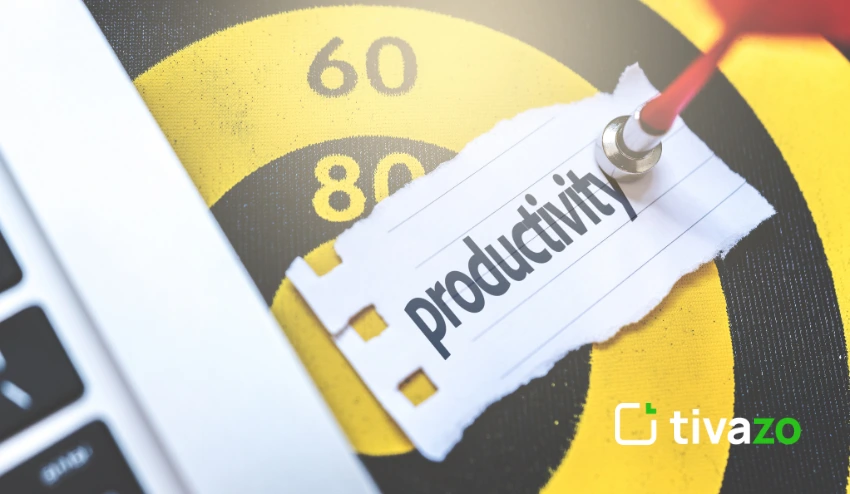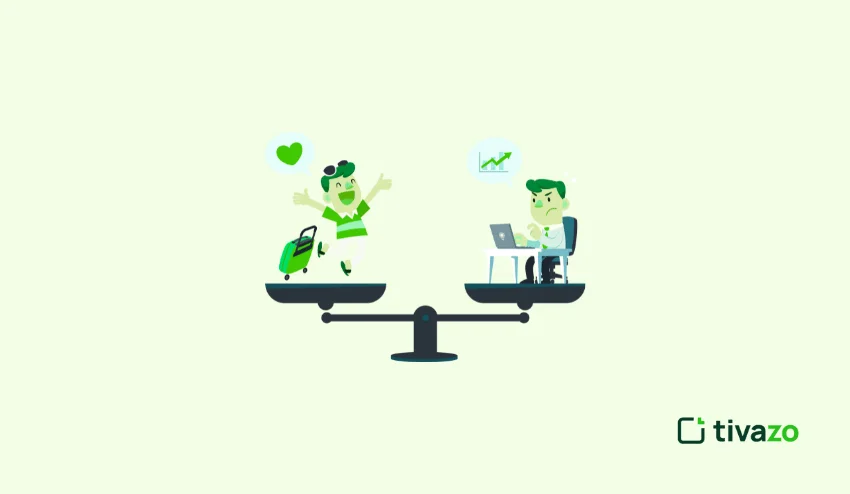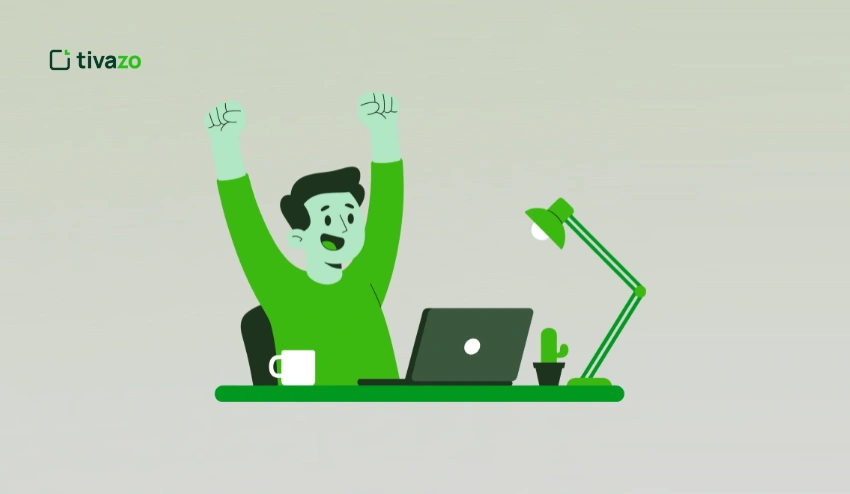Managing teams need not involve day-long staring at spreadsheets. Actually, the workplace environments sometimes embrace a lot of fun as this helps in enhancing concentration, innovativeness, and teamwork. Productivity games are an effective measure to merge work-related objectives with entertaining tasks that increase the level of energy.
Teams have changed their working process by making daily work to be fun over the years. These are not only just time-wasting games, but also practices that can enhance problem solving abilities, communication skills, and even time management. This guide will introduce you to 20 productivity games your team will like at work. All of them are simple to implement, do not require many resources and yield actual results.

What Are Productivity Games?
Productivity games are organized games, which help employees to increase their concentration, collaborations, effectiveness, and make the whole activity fun. They make working activities into challenges with the defined and measurable aim.
They work because they combine three elements:
- Fun- holds people interested.
- Competition-inspires the participants.
- Skill-building- improves work performance on the real job.
The most productive games are:
- Measurable- it is possible to find out progress or results.
- Repeatable- it can be played on a normal basis and it does not lose its flavor.
- Involving – members are happy and ready to participate.
When properly designed they reduce the distance between working and playing.
Why Use Productivity Games at Work?
Work is not only about getting the work done, but also keeping morale high. Productivity games are able to:
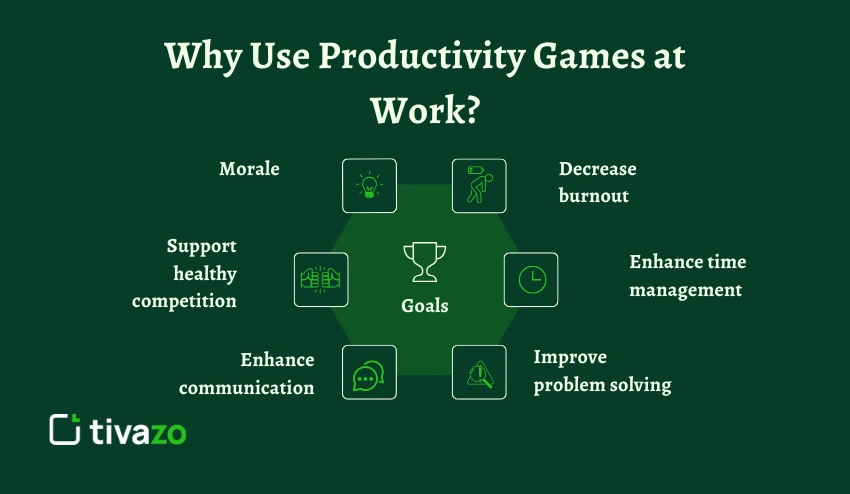
- Morale- People are re-energized and appreciated.
- Support healthy competition- healthy competition leads to increased performance.
- Enhance communication- in some games, communication may be crucial and has to move fast and concisely.
- Improve problem-solving -Creative thinking becomes part of child.
- Enhance time management – People get time conscious.
- Decrease burnout – Fun activities break down the routine and stress loop.
Simply put, such games make work humane in an effort to drive performance.
How to Choose the Right Productivity Games for Your Team
Not every game is applicable in every office. In order to make a good selection:
- Evaluate your team – You need to evaluate by size, working style and personality types.
- Align with the objective -Are you goal oriented? Experiment doing timed challenges. Want creativity? Play brainstorming productivity games.
- See if there are any environmental restrictions – A quiet office may like quiet games. An extrovert staff may flourish on action.
- Do not disturb the workflow – Proper productivity games do not disturb workflows but optimize them.
The correct fit will lead to long-term working relationships and quantifiable values.
The 20 Productivity Games
Here are 20 productivity games you can implement right away:
1. The Pomodoro Challenge
The mechanism: The team members will work in concentrated 25-minute sprints with a 5-minute break. After four rounds, make a longer 15-30 minute break.
Advantages: It assists in training the brain to operate with urgency without making it fatigued. It also helps a lot in dividing big projects into small manageable pieces.
Pro tip: Monitor the amount of work done during a sprint and reward the best performers. Have a common timer app to keep the entire team on track.
2. Daily Standup Dash
The mechanics: Each individual provides a status update every morning in less than 60 seconds: what they got done the previous day, what they are doing today, and any obstacles.
Advantages: Reduces meeting bloat, enhances communication, and aligns everyone without wasting time.
Pro tip: A timer will help to make updates brief and dynamic. When one oversteps, put it in a light-hearted way by giving a light penalty such as making a joke.
3. Inbox Zero Race
How it works: Set a timer (e.g. 30 minutes) and who will be able to clear the email inbox to zero as quickly as possible, without deleting the important messages.
Advantages: Eliminates digital clutter, enhances response time and develops a habit of managing inboxes.
Pro tip: Reward the most innovative email management techniques, e.g., clever filters or clever use of templates.
4. Brainstorm Blitz
How it works: Brainstorm in small groups on a topic in 5 minutes and come up with as many ideas as you can. There is no judging of ideas during the session-quantity first then quality.
Advantages: Frees up creativity and gives a voice to less spoken members.
Pro tip: Visual energy: a whiteboard or online shared board. Then brainstorm and narrow down on the best ideas.
5. Task Tetris
How it works: Fill in the gaps of unused time during the day with as many small tasks as you can- a game of Tetris with your day.
Advantages: Better micro time management and less floating tasks that never get accomplished.
Pro tip: Have a list of little tasks that you do as you go along and check off what you accomplish each day.
6. Productivity Poker
How it works: Tasks are assigned estimated completion times (e.g., 15, 30 or 60 minutes) and compared to actual completion times.
Pros: Enhances the precision of planning and aids the teams in resource allocation.
Pro tip: Keep the game visual by using cards, sticky notes, or an app.
7. Silent Collaboration
How it works: Collaborate to accomplish a task without talking to each other during a specified amount of time, and use written or visual communication.
Advantages: Enhances non-verbal communication and solving problems in abnormal situations.
Pro tip: Debrief later to talk about what went well and what can be better.
8. Meeting-Free Day Contest
How it works: Choose one day of the week when you do not have any meetings and monitor the outcomes of productivity.
Pros: It promotes deep work and helps teams to understand the importance of undistracted time.
Pro tip: Compare the amount of work done on days with no meetings and days with lots of meetings to demonstrate the difference.
9. Process Improvement Hunt
How it works: Team members find one process that can be improved every week and pitch their idea.
Benefits: It fosters a culture of continuous improvement and innovation.
Pro tip: Write in a dedicated chat channel about the progress and reward the most substantial changes.
10. Speed Learning Rounds
The mechanics: Team members give 5-minute lessons on a new skill, anything from a software shortcut to a sales tip.
Advantages: Promotes knowledge sharing and makes team members learn new tools.
Pro tip: Have different presenters each week.
11. Breaktime Bingo
How it works: Create bingo cards with various healthy break activities, stretching, drinking water, short walk.
Advantages: Encourages healthy sleeping and exercise.
Pro tip: Give minor rewards when a row or a complete card is completed.
12. The Two-Minute Rule Race
How it works: Do any task that will take two minutes to finish right now-then find out who gets the most done.
Advantages: Small tasks do not accumulate and develop a habit of acting quickly.
Pro tip: Get the day going with this game to have immediate momentum.
13. Skill Swap Challenge
How it works: Find a partner and learn one new work-related skill to teach the other.
Advantages: Develops flexibility and team building.
Expert tip: Write down skills in a common folder to enable others to learn as well.
14. Creative Hour Contest
How it works: Take an hour and come up with the most creative solution, design, or idea.
Advantages: Increases creativity and lateral thinking.
Expert tip: Make it democratic and fun by letting the team vote on winners.
15. The Documentation Duel
How it works: In this productivity game the participants race to write clear and concise SOPs in the shortest time possible.
Advantages: Enhances the clarity of processes and saves onboarding time.
Pro tip: Compare versions to find best practices and produce a final master copy.
16. Focus Fortress
The mechanics: Choose a time slot to do some work without distractions no phones, no chats, no multitasking.
Advantages: Develops intense concentration and improves the quality of output.
Pro tip: Make use of Noise-cancelling headphones or listen to music playlists.
17. Micro-Goal Marathon
The mechanics: Make a series of objectives and complete all of them one after the other in one go.
Strengths: Gains momentum and is driven.
Pro tip: Have a small celebration after every mini-goal.
18. Feedback Sprint
Mechanics: Give and receive constructive feedback during a short, time-limited session (about 10 minutes).
Benefits: It improves the culture of feedback and helps in solving problems in a shorter period.
Pro tip: All the feedback should be actionable, positive and meaningful.
19. Workflow Relay
How it works: Hand off tasks among members of the team as fast and efficiently as you can- like a relay race.
Advantages: Enhances the speed of handover of tasks and decongestion.
Pro tip: Monitor the average handover time to identify process gaps.
20. Kaizen Quest
How it works: Make a habit of taking small steps with constant improvements.
Advantages: Maintains teams in a state of improvement without large disturbances.
Pro tip: Keep a record of the monthly wins and identify the greatest gains in team meetings.
Ways to Track Results from Productivity Games
The only way to determine whether your productivity games are having an effect is to track the results. You are only guessing without measurement. Begin with hard data:
- Completion rates- Are things getting completed quicker and with less delays?
- Time savings in meetings- Do meetings last less time, are more focused and to the point?
- Speed of projects- Are projects being completed on a timely basis more regularly than in the past?
Ask them what they liked most, what was slowing them down and what productivity games they believe should be retained or discarded. In the long run, this combination of figures and responses will provide you with a clear idea of whether your team is really benefiting- and allow you to adjust your strategy.
Mistakes to Avoid When Implementing Productivity Games
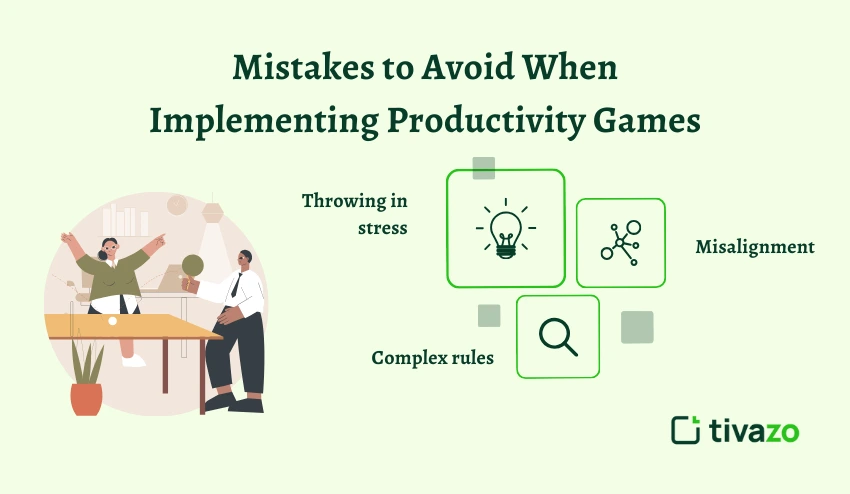
- Throwing in stress- Productivity games are not supposed to be tiring.
- Misalignment- Skip a game that does not align with your aims.
- Complex rules-Keep it simple so everybody gets it.
The wrong way can turn the fun a frustration, so make a good choice in picking productivity games.
My Expert Recommendations
- Start small – Start with 2-3 games and monitor the results.
- Rotate – Switch games to keep them interesting.
- Reward effort – Recognize participation and not just the top scores.
Effective results are seen after consistent sessions. Make sure to not stop after 1-2 times.
Conclusion
Workplace culture can be transformed by productivity games. These games make work fun, promote collaboration and hone critical skills.
Start tomorrow. Choose a game off this list and present it to your team. Observe the difference that a small dose of structured fun can make to your work place by making it more energized, focused and productive.
